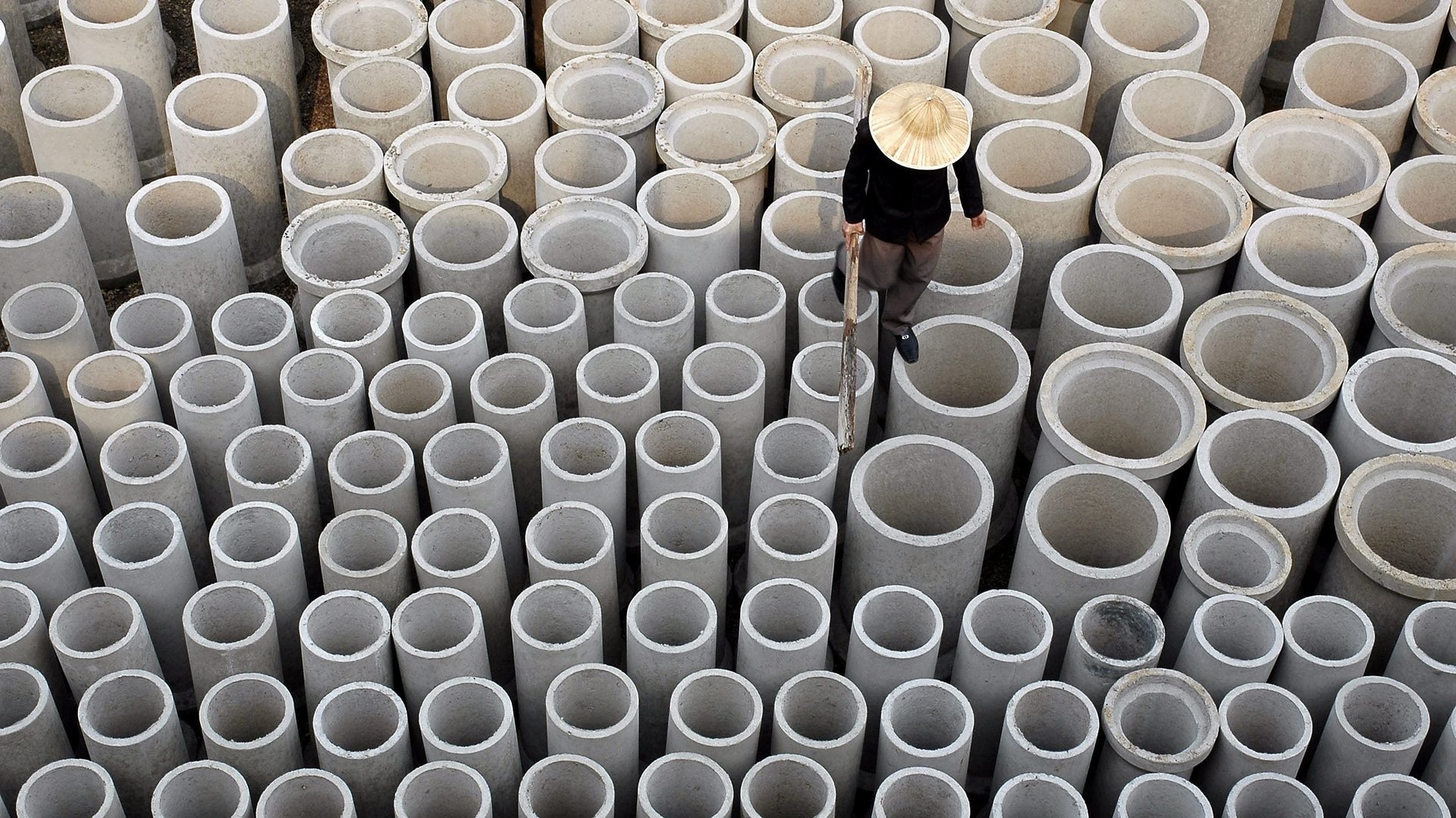Two low-carbon concrete startups will split the $15 million Carbon X-Prize
The nascent low-carbon concrete industry got a $15 million boost on April 19, when the nonprofit Carbon X-Prize named two startups as winners of a five-year innovation contest to design profitable uses for captured carbon dioxide. The prize, sponsored by a group of power and oil companies, shows how the companies want to keep operating as pressure grows from governments, investors, and the public to cut emissions.


The nascent low-carbon concrete industry got a $15 million boost on April 19, when the nonprofit Carbon X-Prize named two startups as winners of a five-year innovation contest to design profitable uses for captured carbon dioxide. The prize, sponsored by a group of power and oil companies, shows how the companies want to keep operating as pressure grows from governments, investors, and the public to cut emissions.
The global economy is still decades away from shuttering all power plants and industrial facilities that run on fossil fuels. In the meantime, carbon capture systems will be essential to drive down emissions from those sources and offset their historic greenhouse footprint. There are about 65 carbon capture facilities under development globally— mostly attached to gas-fired power plants, gas processing facilities, and factories for cement and other industrial products—but the technology has been plagued by the fundamental problem of what to do with CO2 once you capture it. If the gas is worthless, it’s impossible to justify the high upfront capital cost to capture it, and several early carbon capture projects have foundered as a result.
In recent years, the most common approach has been so-called enhanced oil recovery (EOR), in which captured CO2 is sold back to oil drilling companies to be injected into oil wells to facilitate drilling. But with drilling companies facing a bleak outlook for oil prices and looking to curb costs, the market for EOR is limited. The X-Prize was meant to spur the development and commercialization of alternatives; finalists included companies using CO2 to make plastics, carbon nanotubes, and industrial chemicals.
In the end, the two winners were both focused on concrete. Alberta-based CarbonCure Technologies, Inc., developed a retrofit for existing concrete factories that uses CO2 to harden concrete and reduce the amount of energy and water required to produce it. California-based CarbonBuilt, Inc., utilizes CO2 to reduce the amount of cement needed for concrete production, cutting its carbon footprint in half. Its key innovation is the ability to use captured CO2 directly from the smokestack, skipping over a processing step that adds to cost and energy consumption.
Concrete is a good candidate for CO2 utilization, said X-Prize vice president of climate and energy Marcius Extavour, because it is a high-volume industrial product that has its own massive carbon footprint. Out of the finalists, the two winning companies demonstrated the best ability to cut their costs and produce a product with serious market potential.
“It’s kind of a no-brainer,” he said. “We look forward to scaling this up.”
It’s also clear why the sponsors, American utility NRG Energy and Canada’s Oil Sands Innovation Alliance, want to be involved: Both stand to benefit in a world where carbon capture is cost-effective and commonplace. NRG relies on natural gas for much of its power generation, and the processing facilities for low-quality oil sands make it three to four times more carbon-intensive than regular crude oil. Supporting a market for captured carbon could be a cheaper way for those companies to reach net zero emissions than eliminating their reliance on oil and gas.
But ultimately, Extavour said, they will need to do both. ”They have a huge emissions profile they need to deal with,” he said. “Carbon capture is not an excuse to continue business as usual.”
With this prize out the door, X-Prize will next turn to carbon capture technology itself, with a $100 million prize sponsored by Elon Musk that will be decided in 2025.